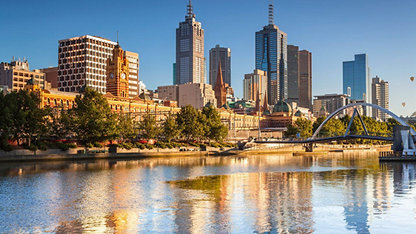Renewable energy is key to achieving net-zero carbon in the UK countryside. RICS interviewed the president of the Sustainable Energy Association Lord Richard Best – who will be speaking at the RICS UK Rural Conference in July – to explore the latest trends and issues.
What one challenge of implementing renewable energy in the rural areas is most often overlooked?
Rural areas face extra challenges in moving towards net-zero carbon. Incomes are lower and prices are higher, so fuel costs matter more. Older homes – detached and sometimes isolated – may be more difficult to heat.
Natural gas fuels 85% of the nation's homes but is not available for rural homes that are off the grid. Hopes that hydrogen can replace natural gas using the same infrastructure are therefore unlikely to help those in such cases.
The government’s 2018 Clean Growth Strategy committed to phasing out the use of high-carbon fossil fuels in the 2020s. This means that coal, oil and liquefied petroleum gas (LPG) boilers must be replaced with low-carbon alternatives.
There is no one technology that will serve as an alternative, but it seems likely that biomass boilers and heat pumps will form the majority of replacement heating systems.
What one trend in rural renewables are you most excited about?
If we can harvest biomass from renewable sources in the UK rather than importing wood from North America or stripping forests in Lithuania, highly efficient wood-burning stoves give us a relatively affordable way to generate energy in terms of their running costs, although upfront costs are often higher than air-source heat pumps. They would also reduce the need for electricity network reinforcement.
Wood pellets with tightly controlled moisture content burn without emitting unhealthy amounts of particulate matter, and at the same time create a market for a by-product of the timber industry. However, growth in this area will remain limited unless government subsidies for biomass-generated heat become more generous.
“There is no one technology that will serve as an alternative [to high-carbon fossil fuels], but it seems likely that biomass boilers and heat pumps will form the majority of replacement heating systems. ”
What one thing can surveyors do to help their clients with new renewable energy opportunities in rural areas?
For landowners, solar photovoltaic installations with battery storage have become vastly cheaper, and are well worth exploring despite the withdrawal of subsidies. Adding battery storage to a solar farm offers additional revenue opportunities, such as the National Grid’s various balancing services.
The government has also now lifted its ban on subsidy support for onshore wind, as it plans to allow for this in its Contracts for Difference auctions.
Meanwhile, rural landlords in the private rented sector may struggle to ensure their properties achieve energy performance certificate ratings of C by 2030. It would be wise to start upgrading sooner rather than later, and rules will be more relaxed for listed properties.
Where do you see rural renewable energy heading in future?
The government is keen to see a big increase in the number of heat pumps, including both air-source and ground-source devices. These can be a practical proposition in rural areas where there is likely to be space around the home, but they are much more economical in new builds than where they are retrofitted; for example, installing underfloor heating may be impossible in some existing buildings.
Nevertheless, more homes could be made suitable for a heat pump with some retrofitting. The decarbonisation of heat is an opportunity to finally insulate our buildings, although listed buildings or homes in conservation areas may be trickier to insulate to the optimal level.
Biofuels are the main contender in the future of renewable energy, but their sustainability could be problematic. Although biofuel LPG is the contender to succeed fossil-fuel LPG, there is controversy about the overuse of palm oil from countries that cannot enforce sustainability standards.
Can you outline the main sources of any grants or incentives available for rural renewable energy?
For local authority and housing association homes, the Social Housing Decarbonisation Fund will make a significant difference. Although still being piloted, this is due to spend a total of £3.8bn on various projects. Currently, housing associations can only access funding for insulation or building fabric and renewable heating retrofits via their local authority, but direct access to grants will surely follow.
In rural areas in particular, the Homes Upgrades Grant will allocate £150m to retrofit the homes of fuel-poor households that are not on the gas grid.
- To learn more about renewable energy and other key issues in the rural sector, join Lord Best and other experts online at the RICS UK Rural Conference on 7–8 July














